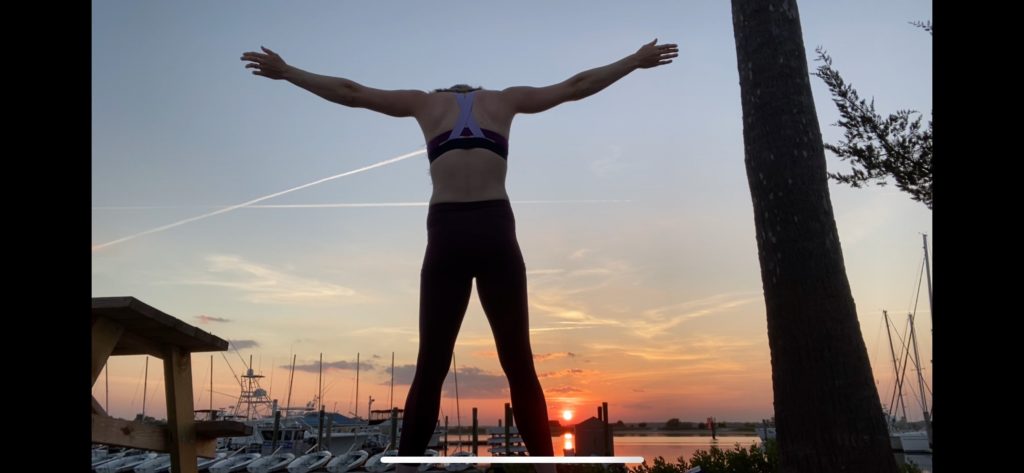
Our Great Loop guidebook gave us three options for our first stop in Georgia, all pretty close to one another – 2 summer-beach-resort islands and an inland town. After getting some advice from a former colleague of mine who hails from Georgia and currently lives in Atlanta, we decided to spend one night on Jekyll Island and possibly have the opportunity to visit the beach and the next night in Brunswick, the inland town, where we’d be able to do another round of provisioning.
Unfortunately, the day before we arrived on Jekyll Island, the county governor had mandated that all the beaches be closed – so we decided to do a bike ride up the island along the coast, but we were not actually able to set foot on the beach. So sad!
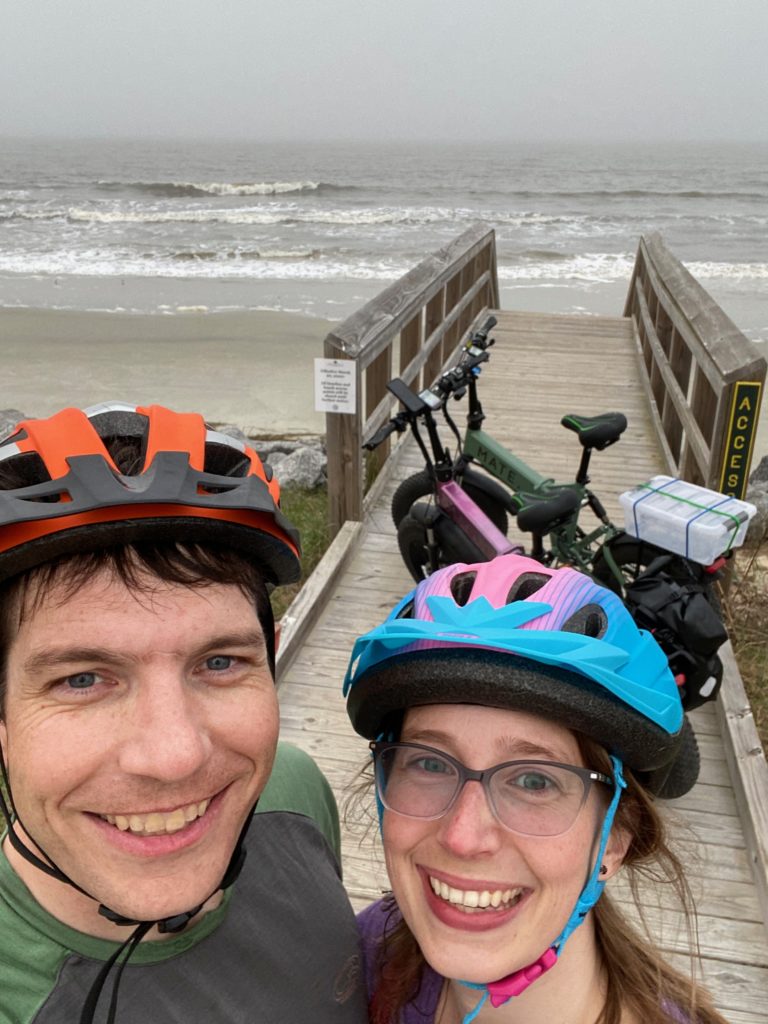
One of the island restaurants had converted their menu to 100% take-out so we stopped there to pick up some food on the way home. The empty box on the back of David’s bike in the photo above was for carrying our takeout! Despite still being very warm out, the skies darkened and we even worried about being rained on as we returned to the boat, which we were completely unprepared for. However, we were lucky and it remained dry.
The next day, we headed out toward Brunswick. This was a pretty short ride. At the north tip of Jekyll Island, we had been prepared for an unusual sight…a container ship wreck. It has apparently been there for several months while they try to figure out how to remove it. They are working on building a containment net to then cut it into pieces and cart it out, bit by bit.

The Brunswick marina was really nice (free unlimited laundry and PBR on tab in a clubhouse, of which we did not partake) and the town seemed really cute. Unfortunately, basically everything other than the grocery and liquor stores are closed, and we are pretty much trying to stay to ourselves at this point, so we contented ourselves with evening strolls, some pole practice in the afternoon, I enjoyed a very bug-filled freestyle dance at sunset, and a couple of quiet evenings to ourselves on the boat with video games, guitar, Netflix, and wine.
The lovely weather and complete lack of anything of any altitude keeps giving us great opportunities for lovely sunsets, though.
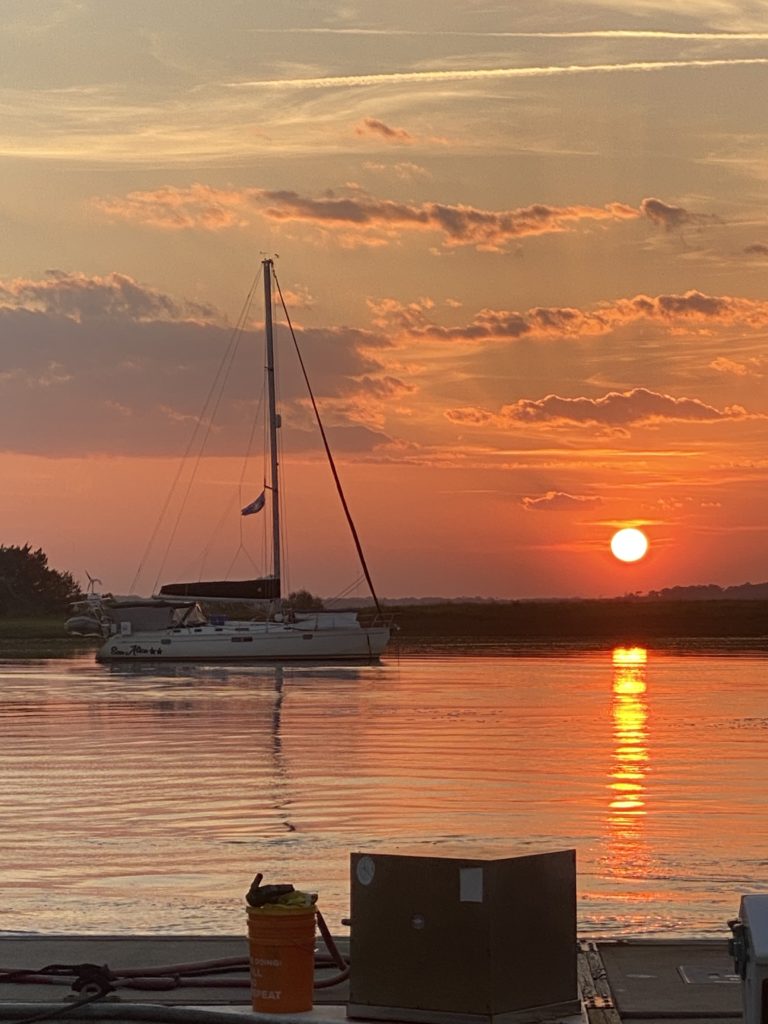
People keep asking us if we should abandon the trip in the wake of the pandemic. While it’s disappointing that we can only walk around most of the spots we’re seeing instead of partaking in any of the culture, we still feel that it’s better than the alternative of staying cooped up in our condo in Kirkland. So, until we start getting locked out of places to stay, we’ll keep progressing north and hope that, someday, things are safe to open again.


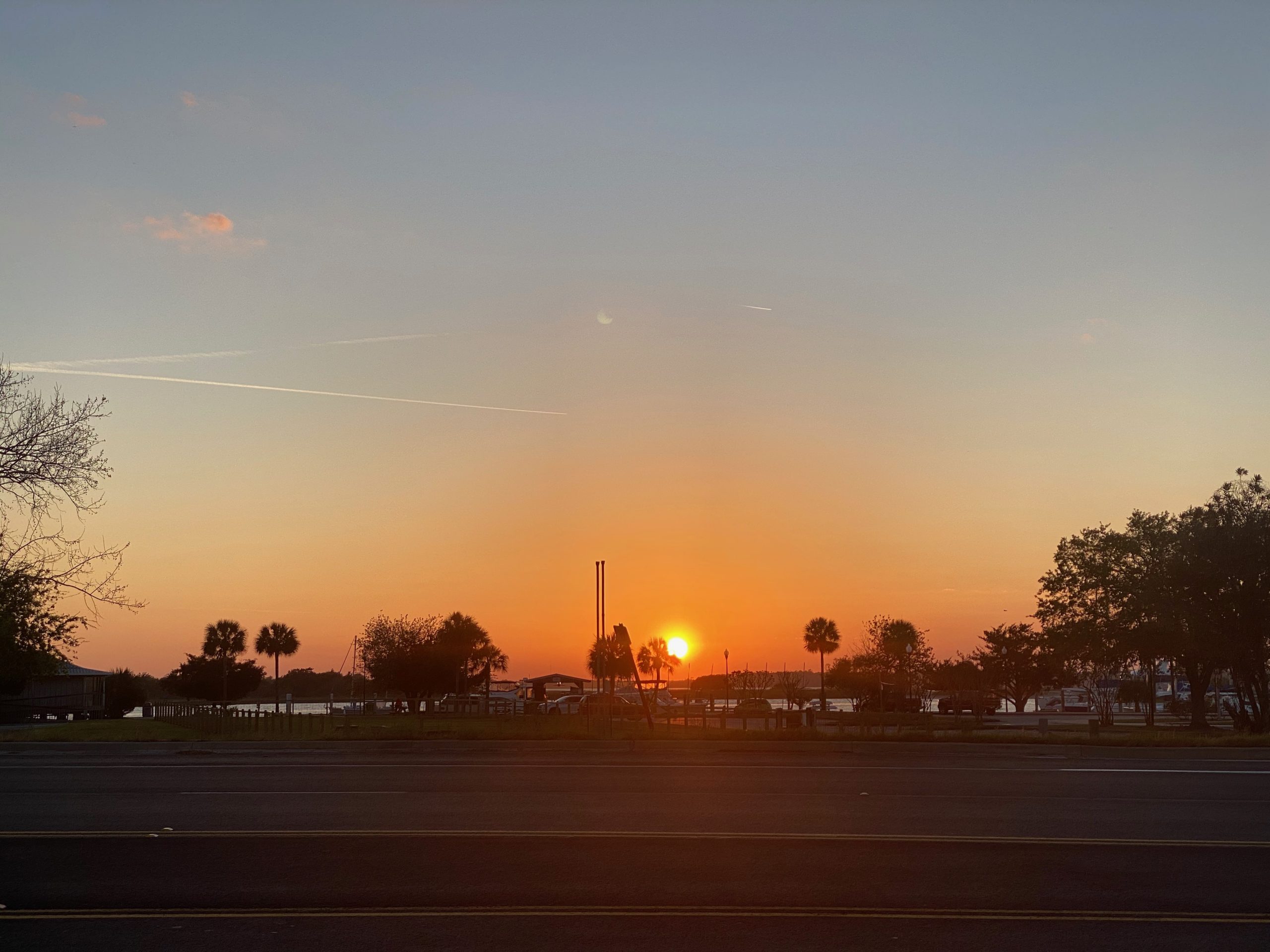

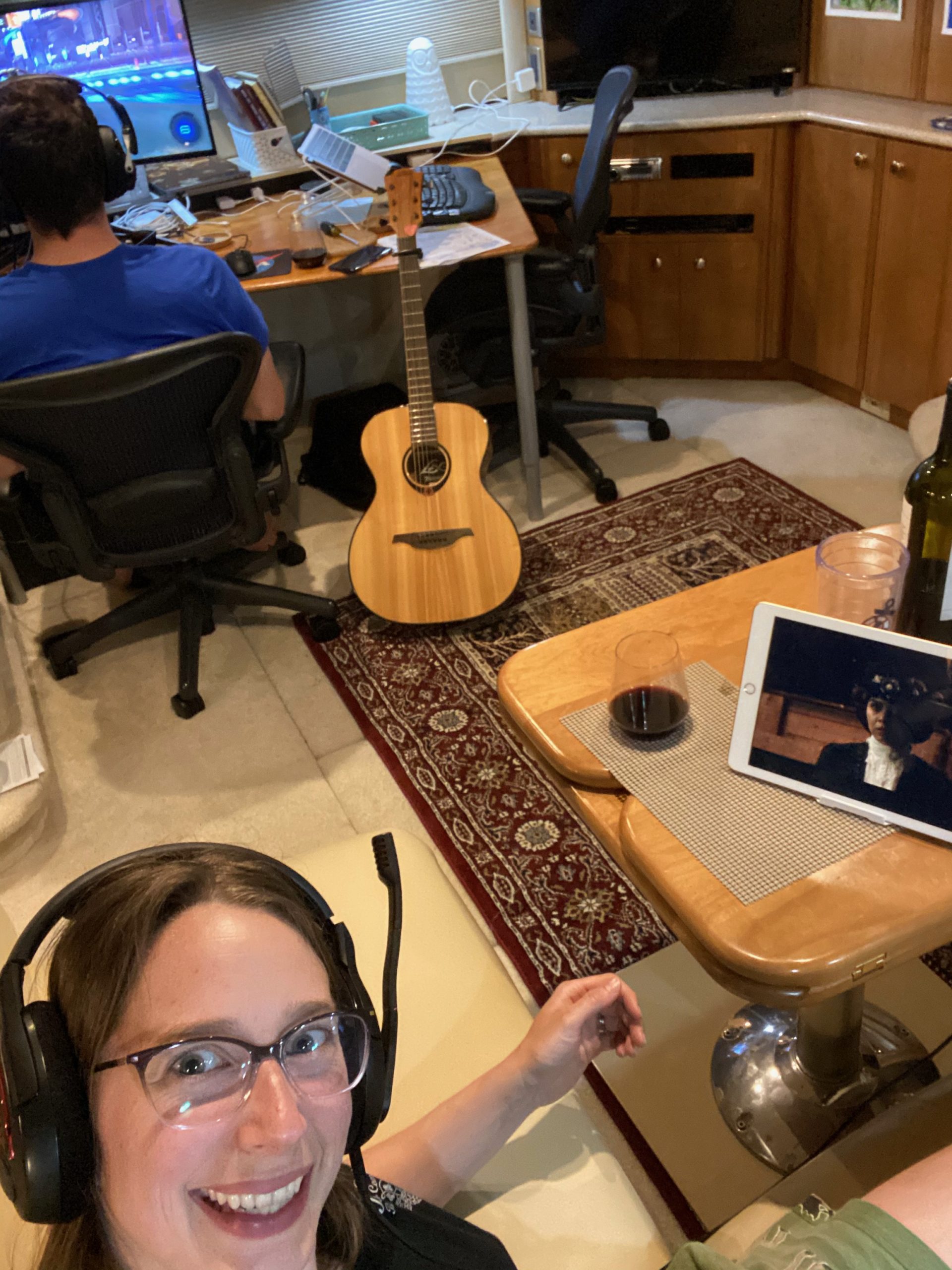
Most marinas and all state marine parks are closed in WA, so keep going! Plus it looks like your speed is pretty good, according to your Garmin. I’m surprised at that as I’ve read the ICW can be slow. Maybe nobody actually goes slow based on your drone video while you were anchored!
We’re doing a pretty good mix of planing and displacement trawling. On the southern florida ICW, there were tons of speed zones keeping you to no or low wake. Once we got to northern florida, there’s very few speed zones on the ICW, so it’s more or less “don’t be a dick”. We slow down every 15 mins or so to pass someone or to try not to destroy someone coming at us with our 3 foot planing wake.
During the week, we need to make time in the morning then work all day (we both work full time), so the pattern is usually “plane as much as possible, with one or the other of us working and the other driving, get on anchor/into a marina, then both work.”
Which is more fuel efficient? Planing gets you up out of the water (less drag) and moves you faster, but certainly uses fuel faster. And displacement trawling uses fuel slower, but with more water resistance. But maybe that slowly chugging engine is efficient enough to overcome the water drag.
That container ship upside down is wild. Did it capsize there in the harbor or was it towed there?
I appear to not be getting email notifications of comments anymore… sweet.
Planing in a big boat like this is a relative term. It doesn’t really get you much out of the water. We do 0.5-0.6 nm/gallon on plane, and 1.5-2 nm/gallon at displacement speeds. Basically at displacement speed, you’re only dealing with v^2, but as soon as you get into planing territory, it’s v^4 resistance.
That ship capsized in the harbor, which is (fortunately?) pretty shallow, so it just kinda turned over on its side and sat there.